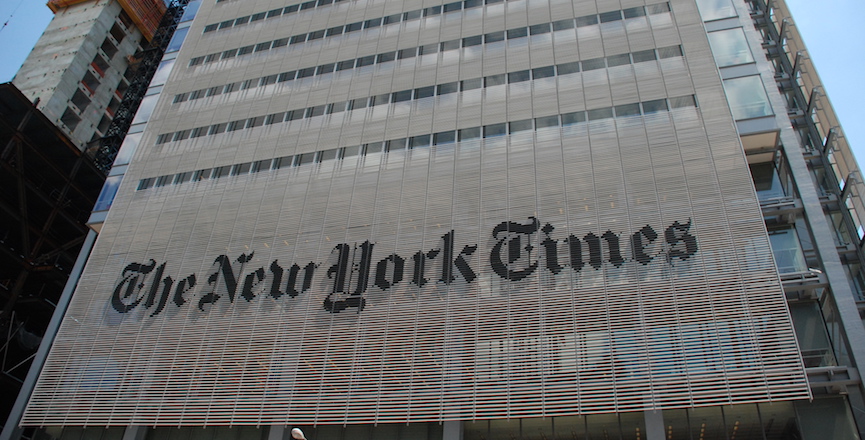For many of the years I was a senior editor of Canada’s largest newspaper, my direct boss was a legendary newsman named Ray Timson.
He drove himself to be the best as a reporter, and he drove the Toronto Star to be the best as its longtime managing editor. He personified Holy Joe Atkinson’s credo for covering the news: “Get it first; sew it up; pursue every detail; and play it big.”
You can still see the swagger of the man in a photograph of him washing dishes in Gerda Munsinger’s apartment in Munich in 1966. The Star tracked down the alleged Soviet spy, who was dubbed “the Mata Hari of the Cold War,” after she had slept her way through half of Prime Minister John Diefenbaker’s cabinet. Timson and Star reporter Robert Reguly camped out and kept all other media at bay until the Star could splash her story.
Get it first. Sew it up. Pursue every detail. Play it big. That was Ray Timson.
In 1984 he asked me, his deputy managing editor at the time, to compile the paper’s first written ethical code of conduct. In a section spelling out the Star‘s rules for using anonymous sources, he added two important sentences: “The Star does not provide anonymity to those who attack individuals or organizations or engage in speculation — the unattributed cheap shot. People under attack in the Star have the right to know their accusers.”
It became known as the “Timson rule” and it survived him and is part of the Newsroom Policy and Journalistic Standards Guide used at the Star today.
I thought about Ray this week when The New York Times stunned the world and ran an unsigned op-ed opinion piece written by “a senior official in the Trump administration whose identity is known to us and whose job would be jeopardized by its disclosure.”
The article disclosed that some of Donald Trump’s colleagues, including the author, “are working diligently from within to frustrate parts of his agenda and his worst inclinations.” It was a bombshell, unprecedented in the history of the U.S. presidency, and it ignited a firestorm of controversy over the Times decision to grant anonymity. Trump, using his usual hyperbole, called it “TREASON.”
What, I wondered, would Timson have done?
Most newspapers, the Star and The New York Times included, believe anonymity should be used as a last resort. Says the Times: “That standard should be taken seriously and applied rigorously. Material from anonymous sources should be ‘information,’ not just spin or speculation. It should be ‘newsworthy,’ not just color or embellishment. And it should be information we consider ‘reliable’ — ideally because we have additional corroboration, or because we know that the source has first-hand, direct knowledge.”
Clearly, the Times felt justified in granting anonymity to a White House insider who was leaking news of an organized, patriotic resistance to Donald Trump. Although its policies say direct quotes from anonymous sources will be allowed “only in rare instances,” this arguably passed the test of being important newsworthy information not available anywhere else.
And it would be easy to argue that a first-hand account of a White House in turmoil was in the public interest.
The decision to run the article would have been made at the highest levels of the paper’s editorial department, and probably only after top editors had met the anonymous writer and verified his position in the White House.
Newsrooms take these precautions because they believe that information is more credible when it’s attributed to named sources and doing so contributes to public trust in the news media.
I think there’s a legitimate public debate about whether the New York Times went too far in this case. After all, was it really news that officials in the White House were working to rein in some of Trump’s most impetuous decisions? Just a few days before, news stories about Bob Woodward’s new book Fear: Trump in the White House said Trump’s closest aides have taken extraordinary measures to try to stop what they saw as his most dangerous impulses, going so far as to swipe and hide papers from his desk so he wouldn’t sign them.
Woodward, of course, granted anonymity to most of his sources, using a technique called “deep background,” where he was allowed to report what insiders told him but did not reveal who said what. The New York Times says in its policy on granting anonymity that its use elicits the most public concern about the credibility of the news-gathering operation.
But Times does not have a Timson rule. You can argue that most of what was said in the op-ed column the paper published was a direct attack on Donald Trump — an ad hominem strike at the heart of his presidency.
So would Timson have run it? Suppose an insider requesting anonymity offered an inside account of similar disfunction in Prime Minister Justin Trudeau’s office? Would he have justified printing it and gone against the Timson rule?
You’re fucking right he would have.
Because in the end, the public’s right to know how it is governed should trump everything.
Image: Joe Shlabotnik/Flickr
Like this article? Please chip in to keep stories like these coming.




